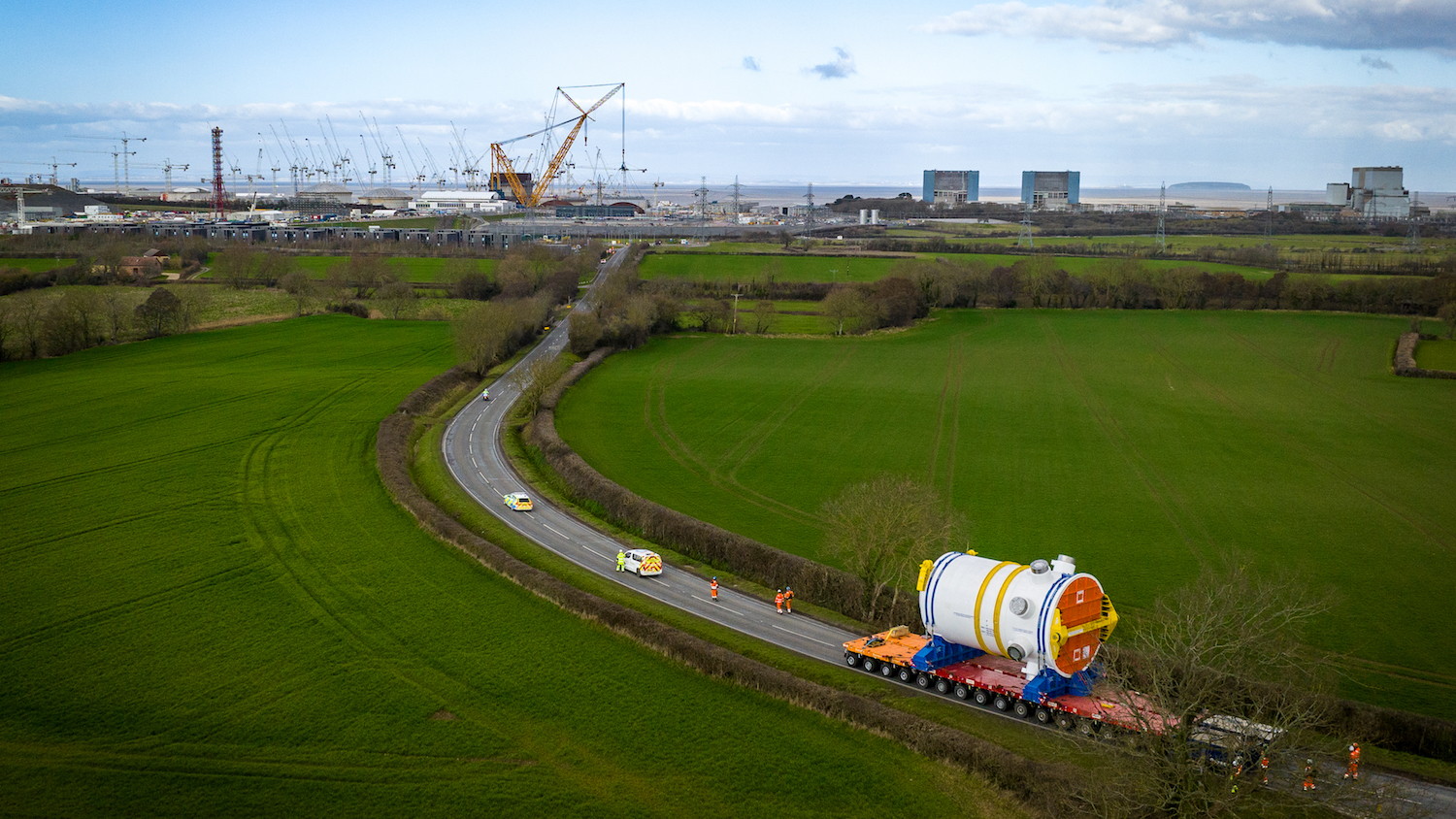
Managing a mega-project supply chain requires a digital approach, says Carl Meewezen, who shares Wincanton’s experience on Hinkley Point C.
Major infrastructure projects are the backbone of any successful economy, driving growth, creating employment and enabling countries to adapt and thrive.
Hinkley Point C, alongside mega-projects such as HS2 and Crossrail, demonstrates incredible feats of planning and engineering. The construction of the UK’s first new nuclear power station for a generation involves some 10,500 people working on the 432-acre site every day.
At the centre of this project is one of the UK’s largest and most complex supply chains, comprising hundreds of contracts. It links a network of domestic and international suppliers, manufacturers, materials and people, which Wincanton has overseen since 2018.
To manage a project of this scale in the most efficient way possible, it is essential to support workers on site with industry-leading technology and digital solutions.
Using digital technology to ensure surety of supply

“Linked to the original purchase order, WSCI tracks the shipment from supplier, reducing costs and boosting construction efficiency for EDF.”
With an almost constant flow of materials, tools and equipment coming into Hinkley Point C, total visibility across the supply chain is a necessity. This calls for a digitally-driven approach.
Wincanton and EDF have worked in collaboration to create a purpose-built materials management solution, WSCI (Wincanton Supply Chain Integrator). It provides supply chain visibility of the millions of products needed on site. Linked to the original purchase order, WSCI tracks the shipment from supplier, reducing costs and boosting construction efficiency for EDF.
WSCI manages many thousands of product lines for Hinkley Point C. Materials flow from multiple suppliers to site via the 1 million sq ft of warehousing space we operate for the project, allowing us to maintain a delivery accuracy to site in excess of 96%.
While WSCI was always a planned part of our approach, we’ve also introduced other technologies in response to changing circumstances on the ground.
During Covid-19, for example, Wincanton introduced head-mounted cameras for on-site product delivery inspections. Live footage of deliveries enabled managers to inspect materials without the need to be at the point of delivery. The success of this approach meant that it was continued even after lockdown regulations were lifted, allowing managers to efficiently monitor deliveries from across the country.
Improving community relations through vehicle management
It is important not to underestimate the value of engaging with the local community throughout any infrastructure project. While it is inevitable that a project of this scale will have an impact, technology can be used to minimise local disruption.
Project-related traffic is something that we know can disturb local communities. Vehicle management solutions that blend routing and scheduling information ensure we continue to be a good neighbour. For Hinkley Point C, we use smartphones as GPS trackers to provide us with real-time evidence that drivers are using routes prescribed within the project Development Consent Order (DCO). This technology, part of WSCI, enables Hinkley Point C to accurately plan around DCO stipulations on the number and timing of HGV movements. This helps to minimise the impact on the local community and keep the project compliant.
There are simpler techniques that can help to minimise disruption, such as consolidating materials offsite. Whenever we have less than full loads, we divert these to a consolidation facility where, at every available opportunity, they are later despatched as full loads. By using this approach, we’ve reduced project-related road traffic to Hinkley Point C by 66%.
Embedding security and safety through data
“We use smartphones as GPS trackers to provide us with real-time evidence that drivers are using prescribed routes.”
A positive security and safety culture is vital for any infrastructure project, particularly a nuclear one. Outside of the obvious serious need to protect colleagues and the integrity of the project, failure to address safety and security issues also has the potential to add unnecessary time and cost to a project.
To support this culture, operations at Hinkley are overseen by a system-based solution, originally intended to track safety incidents. Over the course of the project, we have expanded it to cover security risks as well. It uses this information to predict potential outcomes and examine root causes to prevent unnecessary risk.
The benefits of this technology-driven approach are clear. Since introducing the WSCI system, we have used it to record successfully identified areas where improvements have been made. And last year we celebrated three years without a lost-time incident at our Bridgwater warehouse consolidation facility that services Hinkley.
Crucially, more technology means more data, so security is now quantified as an internal KPI for us.
When Hinkley is operational, it will generate enough low-carbon electricity for six million homes for the next 60 years. That’s 7% of the UK’s electricity.
Vast undertakings like this develop a key place in the public debate. Their delivery is a matter of national interest. Technology is going to be central to delivering them safely and with minimal environmental impact on local communities against wider challenging timelines and budgets.
Carl Meewezen is MD for public and industrial at Wincanton.
Don’t miss out on BIM and digital construction news: sign up to receive the BIMplus newsletter.











